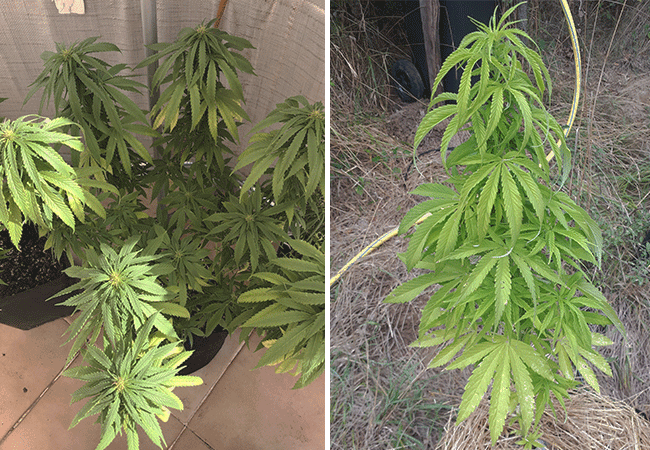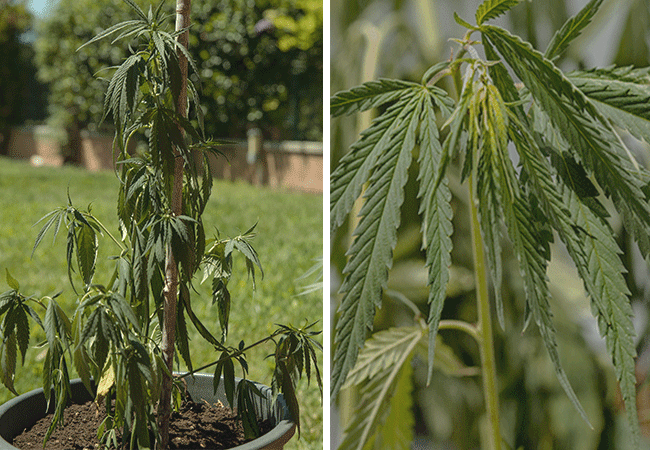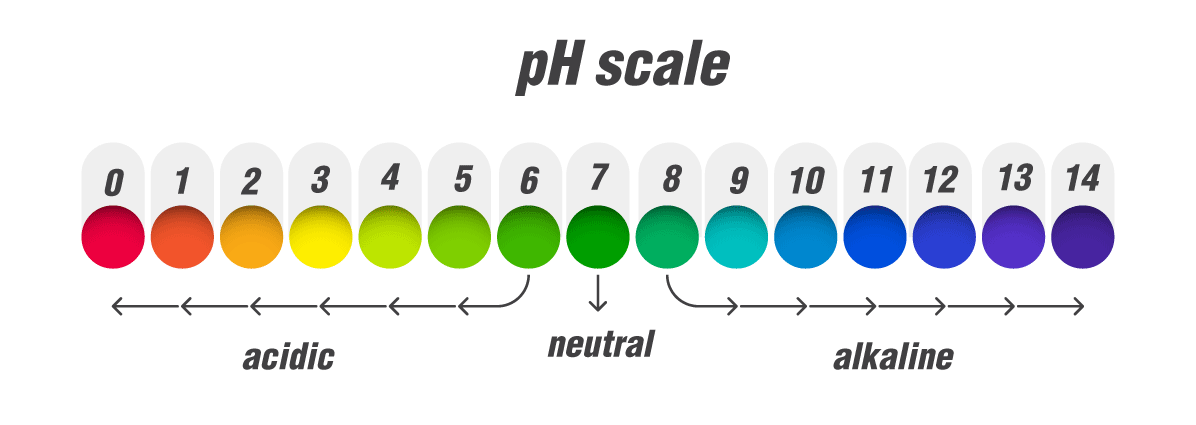How To Solve Underwatering And Overwatering Of Cannabis
Published :
Aug 18, 2019
Categories :
Cannabis cultivation

Watering cannabis is a balancing act. Too much and you risk root rot, too little and your plant will dry out. Use these tips to fix any issues with overwatering and underwatering.
The success of a cannabis grow depends on how well the cultivator manages to balance all of the factors required for plant health. Too little nutrients can lead to deficiencies, whereas too much can lead to root burn. A lack of light will result in stunted growth, but if the light source is too close, leaves will wilt and burn. If the humidity is too high, mould is likely to form, and if it’s too low, you’ll end up with dry and unhappy plants. The exact same can be said for watering.
Underwatering or overwatering plants is by far one of the easiest mistakes to make when growing weed. The symptoms of doing either are quite similar in that you’ll notice leaves beginning to droop and a general ill and wilted look to your plants. This guide will explain how to identify signs of both underwatering and overwatering, and how to remedy them.
THE SIGNS OF OVERWATERING
Overwatering cannabis plants is a very common mistake in novice growers. It’s usually the result of caring slightly too much and providing an excess of a key resource. For some growers, the sight of slight dryness in the topsoil is enough to induce panic. It looks as though their plant is about to dry out and die, so they proceed by drenching the soil with too much water, too frequently.
One key piece of cannabis anatomy is the root system. As well as anchoring plants securely into the soil to prevent the wind from blowing them over, the roots act to absorb water and nutrients from the soil below. A little-known fact is that plants also use their roots to take in oxygen. If you give your plants too much water, or the correct amount, but too often, you obstruct their ability to intake oxygen, which then results in symptoms arising.
Common symptoms of overwatering cannabis plants include drooping of the leaves directly after watering and yellowing of leaves if the problem persists.

HOW TO FIX OVERWATERING
The remedy for overwatering is quite a simple one: ease off on the fluids! First thing’s first, leave more time between watering sessions. Probe the topsoil with your index finger and wait until the first 3cm have sufficiently dried out before applying more water. This will generally lead to a routine of watering around every 2–3 days. Additionally, during watering, make sure not to drown your plant each time. Water enough to notice runoff leaving the drainage holes for about 60 seconds after watering, and no longer.
Pot size is also an important factor to consider here. You’ll need to start your seedling off in a small pot and gradually transplant it into bigger pots as it continues to grow in size. If you place a small plant into a big pot too early, the roots won’t be capable of taking in a lot of water from the soil, which means the medium will stay saturated for too long.
THE SIGNS OF UNDERWATERING
Underwatering can occur due to a busy schedule that forces a cultivator to forget, or it can arise in areas of high heat where watering is required more often. Underwatered plants will also appear to have an ill and weak look to them. Their leaves will be dry and droopy, and the tip of the plant may be bent into one direction.

HOW TO FIX UNDERWATERING
It’s possible to get your plant back on track after a period of underwatering, depending on the severity of the situation. If your plant has been significantly neglected and is literally lying on the topsoil, then the chances are low. However, if all you’re seeing is slight drooping of the leaves and general wilting, all it takes is readjusting your watering schedule.
Water your plant until you notice runoff for 60 seconds afterwards. Now, use the same advice as above; wait until the topsoil has dried slightly to avoid swinging to the other end of the spectrum and providing too much water.
WHEN IS THE RIGHT TIME TO WATER CANNABIS?
Even if you know how to manage water-related issues, you still need to establish the best time to water cannabis plants. Timing goes hand in hand with the techniques listed above, varying according to the seedling, vegetative, and flowering stages.
Seedling cannabis plants are particularly vulnerable, especially when it comes to watering—less is more at this crucial stage. Using a spray bottle, rather than a watering can, will help overzealous growers keep hydration under control. Give seedlings a light misting when the surrounding soil has begun to dry and your plants should flourish in no time.
Once a root system has developed, you can switch to watering routines that will see you all the way through to harvest. In line with the guidance above, watering should take place every 2–3 days, or when the surrounding soil is dry to the touch. The most effective way to get into good habits with watering is to water at the start of the day. For outdoor cultivations, plants will have an entire day of sunlight to utilise. If growing indoors, it is helpful to set your grow lights to come on at the start of the day, just as you are watering.
Watering in the evening is an option, but the lower evening and nighttime temperatures can lead to a buildup of mould.
PAY CAREFUL ATTENTION TO PH—IT MATTERS
Consistency in watering routines supports another vital building block of cannabis—nutrition. Your plant's root system will absorb essential nutrients from its growing medium, but only when pH levels are optimal (6.0–7.0 pH for soil, 5.5–6.5 for hydro/soilless/coco). The key is to keep plants watered on a schedule. Not only does it keep plants routinely hydrated, but it will prevent fluctuations in pH—a symptom diagnosed by brown spots on middle or lower leaves.
To maximise nutrient uptake, aim for 10–20% runoff every time you water. Adopting this approach at an early stage should keep pH fluctuations to a minimum. However, it is especially vital if you are increasing nutrient concentrations for any reason (bloom boosters during flowering, for example).
If you are still noticing problems with your cannabis (deformed leaves, fungus, or spots), it could be the pH of your water that's the problem. No matter how skilled you are at balancing the pH of soil, water that is too acidic or alkaline can throw all your calculations into disarray. Use a pH tester to make sure you have a level playing field BEFORE you start to use pH-up or down to maintain an ideal window.







































